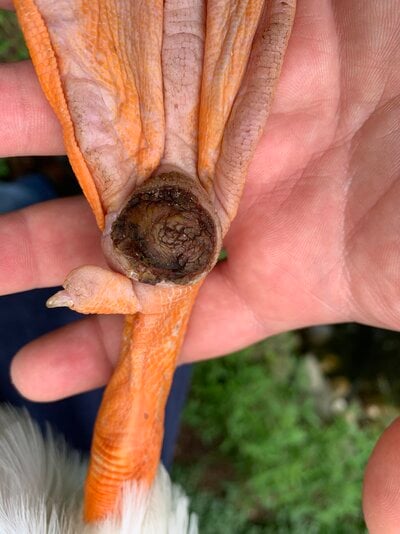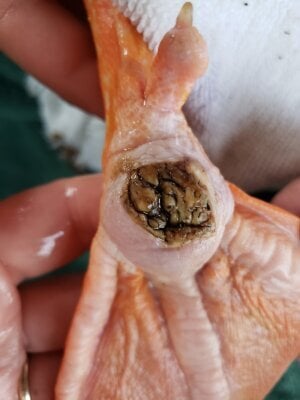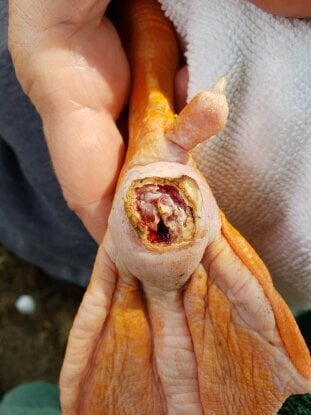- Apr 26, 2012
- 92
- 47
- 126
My duck had surgery 8 days ago for a huge bumblefoot. I do not have access to a farm animal vet, so a respected “regular” vet did it. He prescribed Baytril in pill form for 10 days. Tomorrow will be her last day. I would like to verify with anybody here who is familiar that the dose has been correct. I read in a book that I purchased (recommended here) not to give antibiotics past about 7-10 days or it could cause yeast problems and/or sour crop. I sure don’t need anything more to be treating.
Last night upon doing our daily cleaning and bandaging, we realized the scab around the edges was loose in places, so we started peeling it off. There was a lot of cheese like, semi-hard pus (we think). I don’t know if that was active infection, old pus, or whatever. But anything that came away easily, we took out. Now I’m wondering if the Baytril should be extended. I’m not sure if the vet only excised the middle of the scab or what, but he definitely didn’t remove the entire scab. I will include a photo from before surgery, one from Sunday night, as well as one from last night (Monday) after we debrided the scab.
The form she has been on is called Baytril 20 (22.7 mg tabs). She is a jumbo Pekin. I have not weighed her, but I’m assuming the vet did. I’m wondering if this dosage is acceptable, and if anybody thinks the oral antibiotic should be extended? I am so hoping this has not gotten into her bones (osteomyelitis).
Last night upon doing our daily cleaning and bandaging, we realized the scab around the edges was loose in places, so we started peeling it off. There was a lot of cheese like, semi-hard pus (we think). I don’t know if that was active infection, old pus, or whatever. But anything that came away easily, we took out. Now I’m wondering if the Baytril should be extended. I’m not sure if the vet only excised the middle of the scab or what, but he definitely didn’t remove the entire scab. I will include a photo from before surgery, one from Sunday night, as well as one from last night (Monday) after we debrided the scab.
The form she has been on is called Baytril 20 (22.7 mg tabs). She is a jumbo Pekin. I have not weighed her, but I’m assuming the vet did. I’m wondering if this dosage is acceptable, and if anybody thinks the oral antibiotic should be extended? I am so hoping this has not gotten into her bones (osteomyelitis).
Attachments
Last edited:







